Joi Foy, Journalism News and Information ‘25, for JOUR 4130 Gender, Race, and Class in Journalism and Mass Media with Victoria LaPoe, Fall 2024
During the fall 2024 semester, the staff of the Mahn Center for Archives and Special Collections worked intensively with Victoria La Poe’s JOUR 4130 class, Gender, Race, and Class in Journalism and Mass Media. The students explored, selected, and researched materials from the collections, then worked in small groups to prepare presentations. The students had the option to then expand their research into a blog post like this one for their final project.
My Story
Growing up in Birmingham, Alabama as a Black girl, I was heavily indulged into the African American history around me, especially that of the Civil Rights Movement. My grandparents were only five years old when the 16th Street Baptist Church bombing occurred just a few minutes from their childhood homes. My ancestor’s history was a part of my everyday life, right in my backyard. My elementary school would take us to the Civil Rights Museum at least once a year, immersing us in the culture and history that was around us. That was until I went “over the mountain” also known as “where the white folks lived.” I began attending one of the school systems there in 4th grade and for the first time in my life, there was no Black history month program or even a sentence about the important figures I had grew to love. I was so shocked by this revelation that I wrote stories about my favorite Black history figures at the time and turned them into my teacher as extra assignments because exploring the topic had become an important part of my life and the idea that it was not important to others just did not sit right with my brain.
The Post and the Afro-American Affairs
This same shock, of people not caring about the experiences of Black Americans, would stick with me for a while but soon turn into an expectation. The shock that I experienced during this fourth-grade class, was one that I also experienced when researching the archives and comparing the coverage of The Post and the Afro-American Affairs to one another. For these newspapers, I focused on the coverage of October 1978. During the month, The Post would publish 22 newspapers ranging from October 2-31, 1978. The Afro-American Affairs would publish one. During this period, The Post would publish little to no coverage about Black student-specific events. By The Post limiting the amount of coverage for the Black student specific events and organizations, the points of cultural erasure, media gatekeeping, standpoint theory and priming should be discussed.
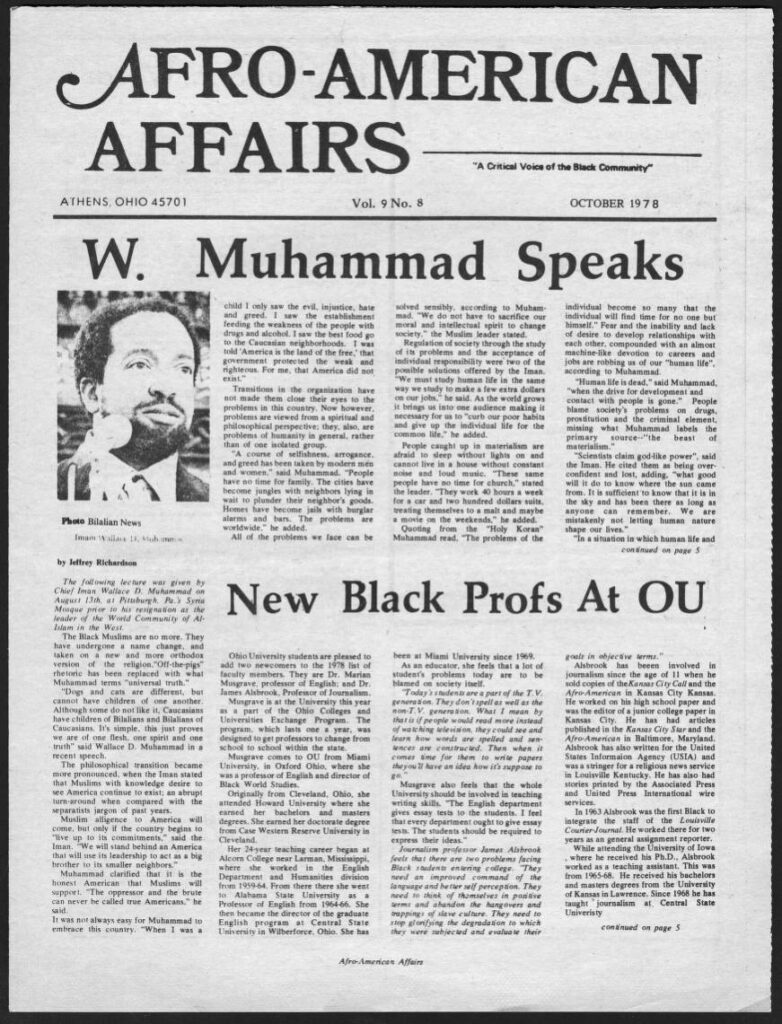
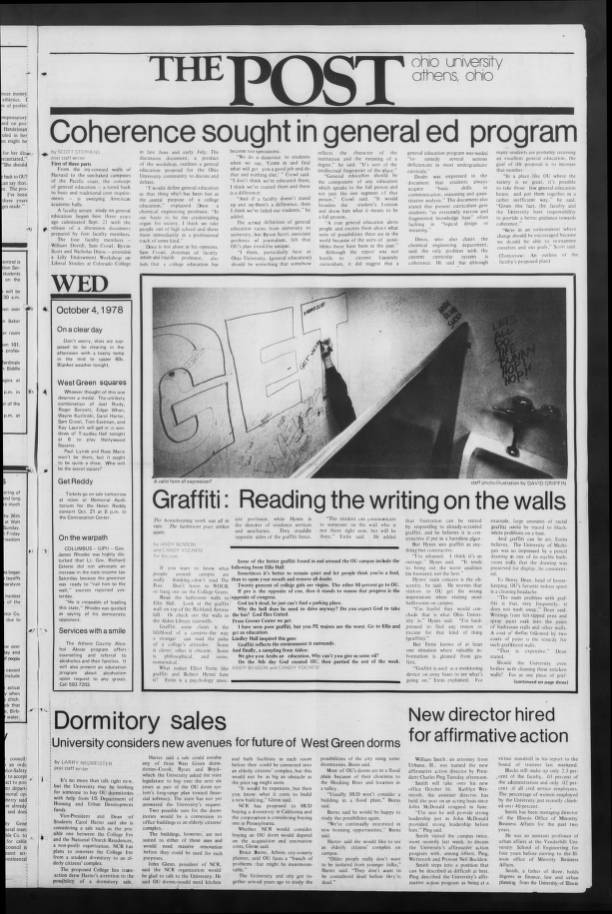
Being a part of multiple Black and multicultural student organizations myself, I find the significance of these organizations a little bit deeper. During the Afro-American Affairs October newspaper, one of the things that the newspaper highlighted was the different historically Black Greek letter organizations and student organizations available for students to join.
A highlight that I expected to be in at least one of The Post newspapers but could only be found in the Afro-American Affairs was a pageant done by the Black Student Cultural Programming Board. The pageant, called “Black Homecoming” because of the event taking place during OU’s homecoming weekend, would pick a cause to support.
Contestants would then compete to raise as much money as possible and whoever raised the most would be presented with the homecoming crown. The pageant, now called the Blackburn-Spencer Scholarship Pageant, is still up and running today. The pageant now supports a scholarship that is given out in the spring and open to all Ohio University students to apply. The Black Student Cultural Programming Board also celebrated its 50th year anniversary this semester.
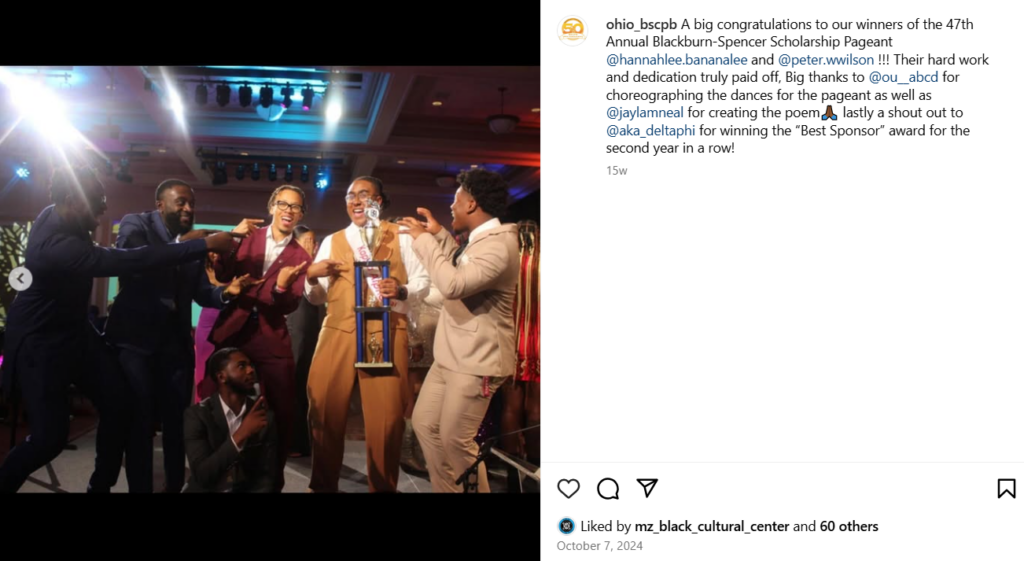
In the 1970’s, the student organization’s president, Demi Ward, was disheartened that the pageant was not covered by The Post, but due to her experience with the covering of the event in her three years of being a part of the organization was not surprised. “Knowing that the pageant was only covered in the Afro-American Affairs and not The Post was disheartening. Four years prior (1974), African American students protested outside of the president’s office fighting for the same representation as all other Ohio University students, this makes me feel like we still were not heard…” This does not surprise me at all in anyway. In 2023, the pageant was covered by The Post because a Black woman who worked for the newspaper advocated about how eager she was to know the history of the pageant. This year, when her representation was no longer there, we again did not get any coverage. The Blackburn Spencer Pageant is the largest scholarship initiative towards the Blackburn-Spencer scholarship and our community fights hard for such a successful event. This year with no coverage we’ve seen a decline in number of attendees.
Cultural Erasure, Media Gatekeeping and Standpoint Theory
The lack of coverage by The Post can have results of cultural erasure and support the ideas of media gatekeeping. Cultural erasure is the systematic removal or marginalization of a culture’s identity, practices, and history. An example of cultural erasure is Black women journalists. In the book, Giving a Voice to the Voiceless: Four Pioneering Black Women Journalists by Jinx Coleman Broussard, she gives the proper recognition to Black women journalists who had been seemingly erased from history books and pieces about the Black press. “Although they actively engaged in journalistic pursuits and received acclaim for their work at the time, these turn-of-the-century black women journalists have remained virtually invisible in literature about the history of the black press, the feminist, and the mainstream press” (Broussard 1).
Without the proper coverage and acknowledgement of events by the press, people and things can seemingly disappear from our knowing. It also allows for the importance of events, people and things to become unknown to people not a part of the cultures. By limiting the coverage of events held for Black students, media outlets act in a form of media gatekeeping. These media outlets ultimately get to decide who and what is important in coverage. By excluding and limited the coverage of Black students, their events and things important to them are gatekept from campus and the society around us, continuing in the erasure of them. For the National Panhellenic Council’s president Andrew Owusu, this is evident in NPHC’s plots and issues the council has faced in their upkeep and overall respect of the plaza.
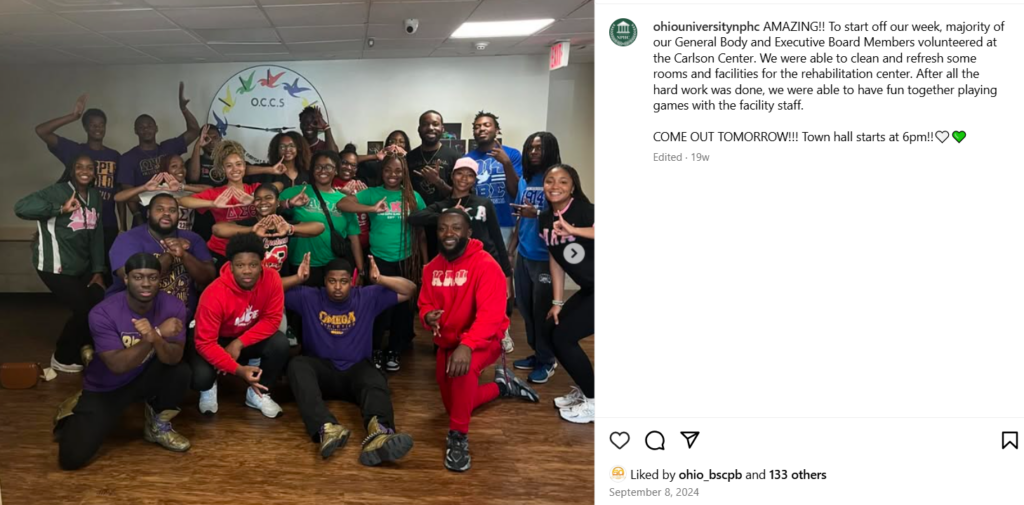
“I would say that media coverage is critical just to spread awareness like our plots for example seemed to have been disregarded and I really think it was just because of awareness and lack of media coverage,” Owusu said.
The plaza, which sits on college green, represents all nine of NPHC’s, also known as the Divine Nine’s, organizations. The organizations are historically Black sororities and fraternities founded throughout the 1900s. For NPHC members, the difficulty has been that the plots are not to be used as a lounge space for campus, it instead should be viewed as a place of respect to be observed by members of the community to educate themselves about the history of the individual organizations and the council as a whole.
During the construction and opening of the plaza, The Post reported once during the construction and a second about the grand opening. The article during the construction broadly touched on the importance of bringing the plaza to campus and the meaning of the plaza’s design.
While the design and idea of the plaza’s goal to “provide inclusivity and increase visibility and continued support to members of NPHC” (Blair) is important, it is also necessary to include the importance of the plaza to and the respect that should be given to the plaza in these pieces. This much needed viewpoint is the reasoning behind standpoint theory. The key concept of standpoint theory is, described by communicationtheory.org, to “understand the perspective of the ones who are marginalized in society…varies from one person to another but the similarities in perspective are seen in certain groups where they share common environments.”
It is imperative to hear from the people in the communities that we are coming from. This allows the correct context of the conversations. While the two articles that The Post did cover on the NPHC plaza, the quotes used within the article only addressed the excitement around the plaza. The stories, written by two different authors, both included quotes from two different NPHC members in the same context with little to no different information in either. If we as journalists are going to hear from the communities, allow them to be heard, do not include quotes just to make yourself credible with no substance.
The Missing Voices & Priming
The Afro-American Affairs ran from 1970 to 1982. It was the voice of the Black community at Ohio University. Now that it has been no longer running, Black students must seek out ways to find out the information for the events made for them, by them. The difference now is, there is no medium dedicated to ensuring that the content that the Afro-American Affairs ran is now available for its demographic.
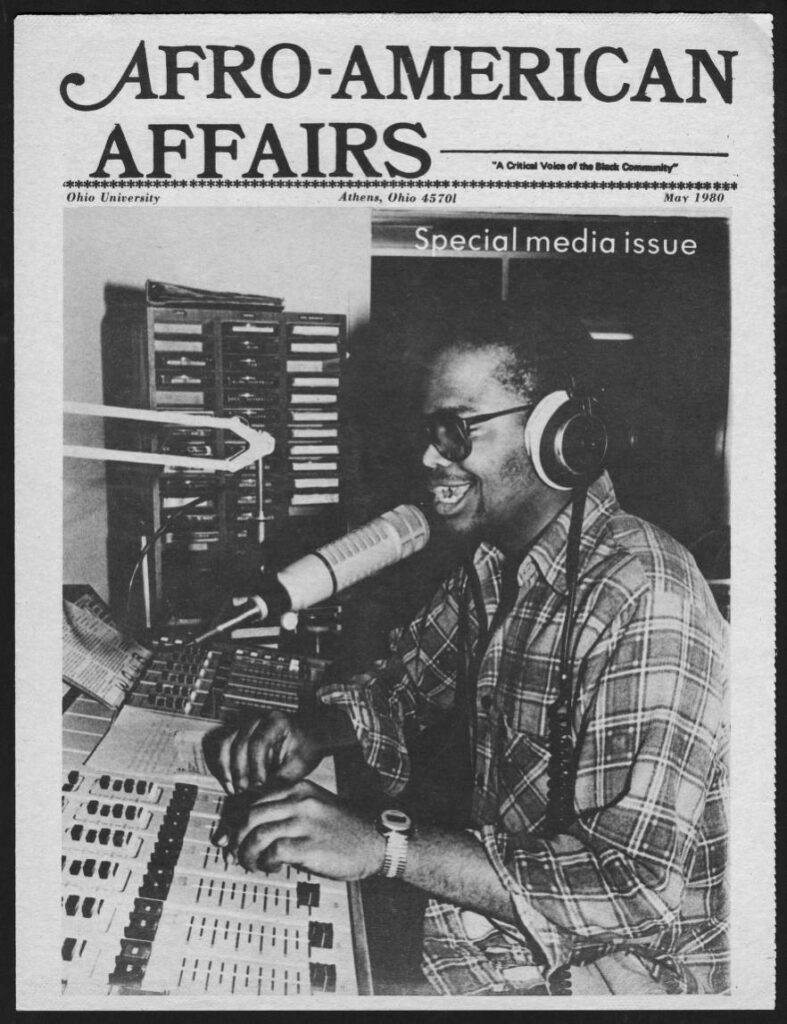
We have newspapers, notably The New Political and The Post, that cover a plethora of on-campus news. Not only do these newspapers have the bandwidth to do a better job in covering these events, I also believe that it is imperative for students to see the underrepresented communities on this campus in a light beyond what people may have been primed to believe about them. In the article, “Online Momentum: Priming in the Native American Press”, priming is defined as “the concept that subtle cues in media can activate previously dormant stereotypes and dampen perceptions of people from diverse communities.” How the media portrays diverse, marginalized communities has an effect on how we see them in the real world. If people are only being exposed to the negatives of these communities their perception of these communities will have the possibility of becoming negative as well.
Priming, standpoint theory and the other ideas discussed throughout are the exact reason that it is important that we see Black, and multicultural, organizations in the media for the work they have done for decades and continue to do. Osahon Ogbebor, president of the Epsilon Lambda chapter of Kappa Alpha Psi Fraternity Inc. at Ohio University, believes so also.
“The importance of having Black student organizations cannot be understated as it is vital for people of color to see people that look like them. Often times, people may not feel safe or welcome in certain environments based on the people around them. Having this in the media gives people of color visibility and reassurance they need to know that POC’s can make a difference as well.”
Works Cited
- Broussard, Jinx C. Giving a Voice to the Voiceless: Four Black Women Journalists, 1890-1950. Routledge, 2003.
- Psychology, Behavioral And Social Science. “The Standpoint Theory.” Communication Theory, 23 Apr. 2024, www.communicationtheory.org/the-standpoint-theory/.
- LaPoe, Benjamin R, and Victoria Lapoe. “Online Momentum: Priming in the Native American Press.”